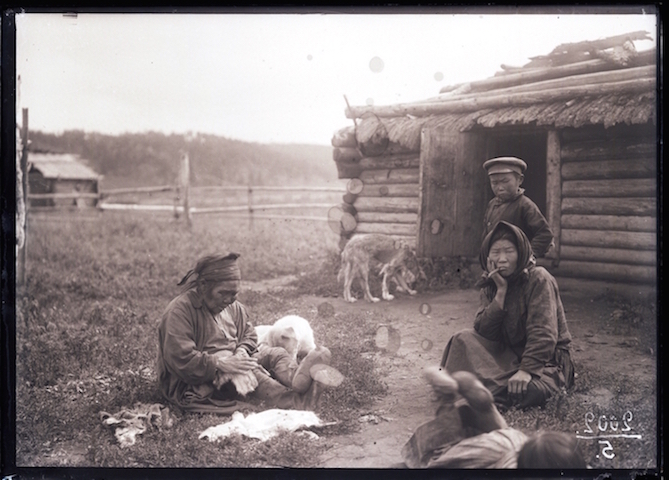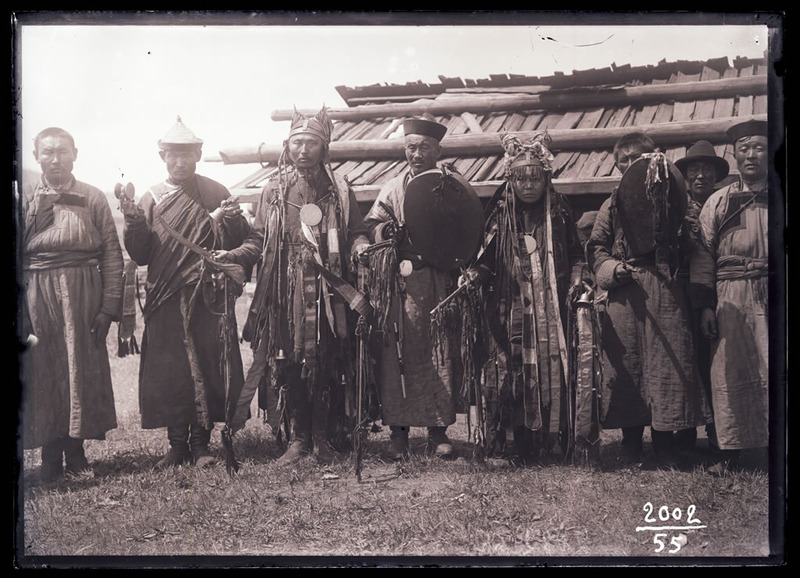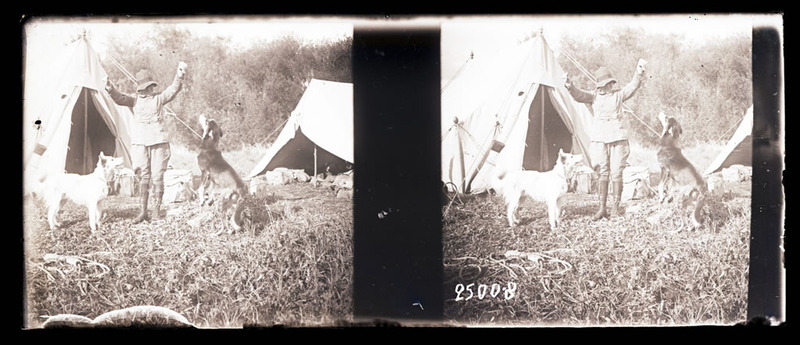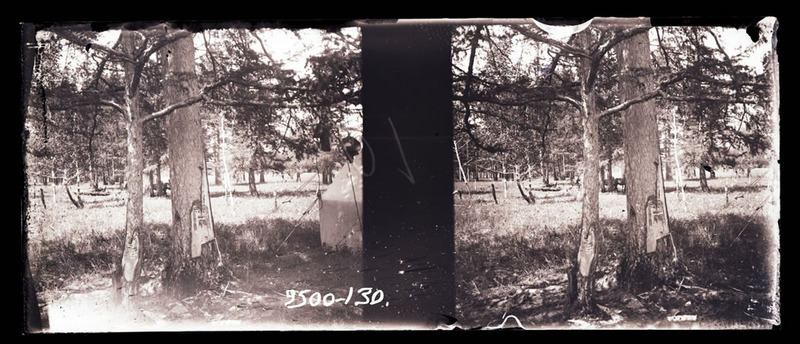River Stars Reindeer Exhibition

Aleksandr Yakovlev, 1911. Shirokogoroff Collection, Orochens, Priamurskii Krai, Siberia, China in distance, MAE 2639A-010
"Orochen with Reindeer Before the Crossing of the Amur"
Aleksandr Yakovlev, 1911
"A shaman, shamaness & Achinsk Lama with Helpers"
"Aside from figures of animals one can find amulets of boats, fangs, bows, and arrows, male and female faces of the spirits Savaki, stars and lightning.
There are also discs representing the sun, moon (if semi-circular), rainbow (a ring) or the sky. The sky is represented as a four-sided figure with the same shape cut-out within, and representations of stars along its sides. The shaman goes to the Upper World through this hole.
The entire collection makes such a loud noise..."
Sergei Shirokogoroff, 1912-14: folio 227 (abridged)
"Elizabeth Shirokogoroff Feeding their Dogs"
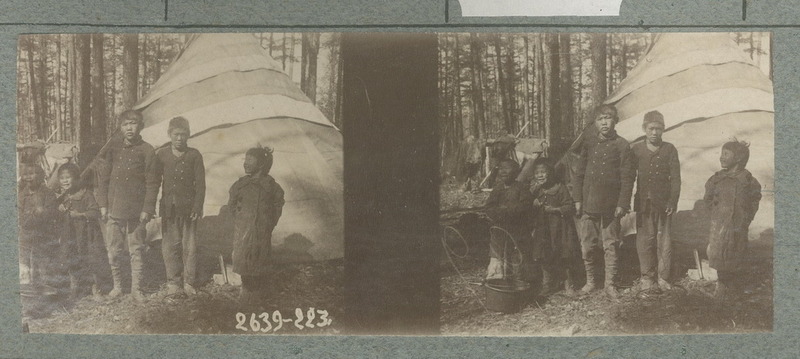
Sergei and Elizabeth Shirokogoroff, Autumn 1915, Orochens: Bystraya River valley, Northeastern Manchuria, MAE 2639-228
"Types of Amur Orochen"

Sergei and Elizabeth Shirokogoroff, June 1912, Orochens, Povarniskii ulus, Zabaikalskaia oblast, Siberia, MAE 2002-0087

Sergei and Elizabeth Shirokogoroff, June 1912, Orochens, Povarniskii ulus, Zabaikalskaia oblast, Siberia, MAE 2002-93
"Seleznev and His Companion Dressed in Winter Clothing"
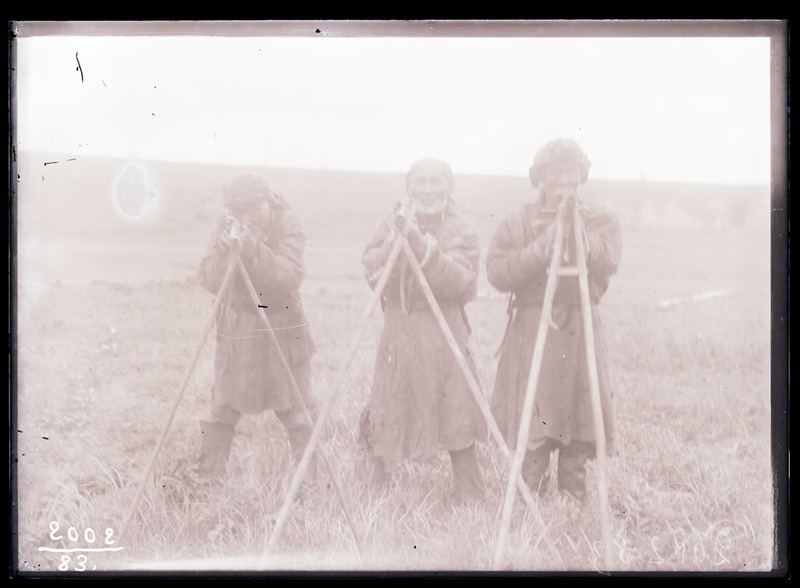
Sergei and Elizabeth Shirokogoroff, June 1912, Orochens, Torchakon ulus, Urul'ginskaia volost', Siberia, MAE 2002-083
"Three Orochen Hunters"
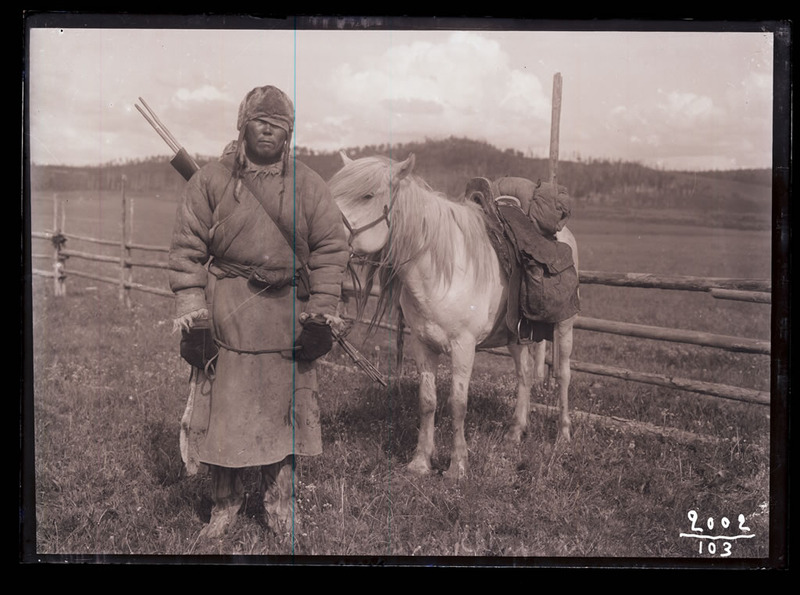
Sergei Shirokogoroff, July-August 1912, Orochens, Tyksyr Village, Upper Nercha River Basin, Siberia, MAE 2002-103
"An Orochen man with a Horse"
Orochens consider the best quality of horse to be a robust horse...
Since their hunting lifestyle does not allow them to put up hay, the horses are trained to go without fodder for 2-3 days. They also train horses to eat berries, brush, and meat. First they give the horse some boiled highly salted meat, then they give meat without salt, and then they give raw meat. The normal ration is given once per day in the morning - 8 funty (3kg) of meat per horse. These "non-vegetarian" horses survivce to age 25 in the taiga and are very robust and strong.
Elizabeth Shirokogoroff, 1919:29
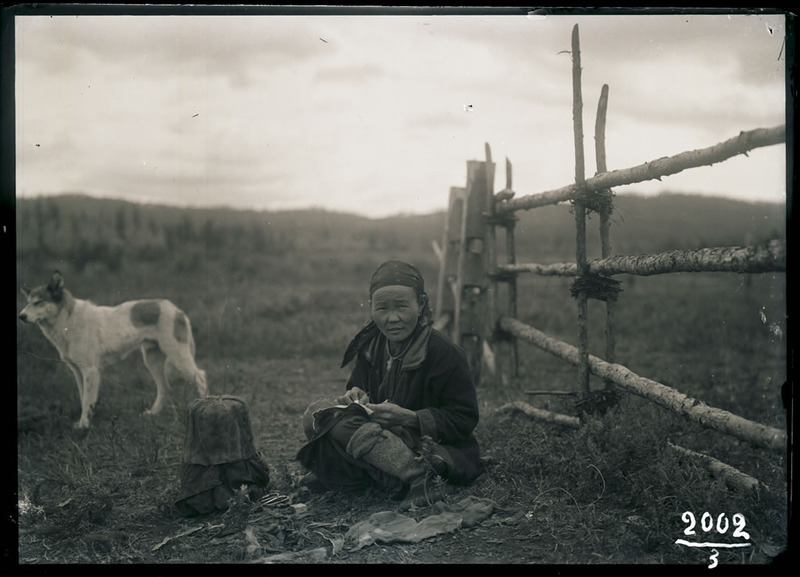
Sergei and Elizabeth Shirokogoroff, July-August 1912, Orochens, Tyksyr Village, Akim River, Upper Nercha River Basin, Siberia, MAE 2002-003
"Orochen Woman Sewing"
The preparation of clothing - be it coverings, sewing, or preparing leather - is completely the responsibility of women. Every woman learns to sew from childhood...some women specialise in footware, others in making mats, and others do ornaments. ... They sew well to impress the men. Orochens love displaying their work and an aesthetic sense lies deeply in their psyche. Often one can see a woman spending time assembling some small items when other more important work waits.
Sergei Shirokogoroff, 1912-14: folio 73
